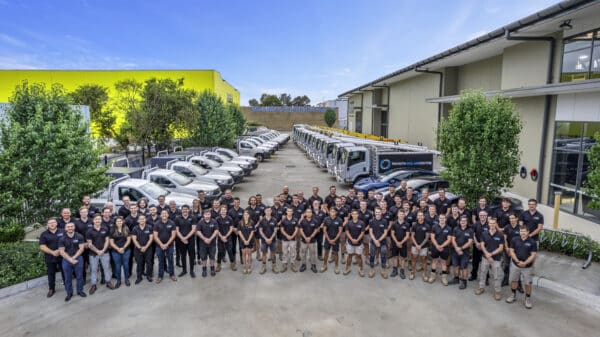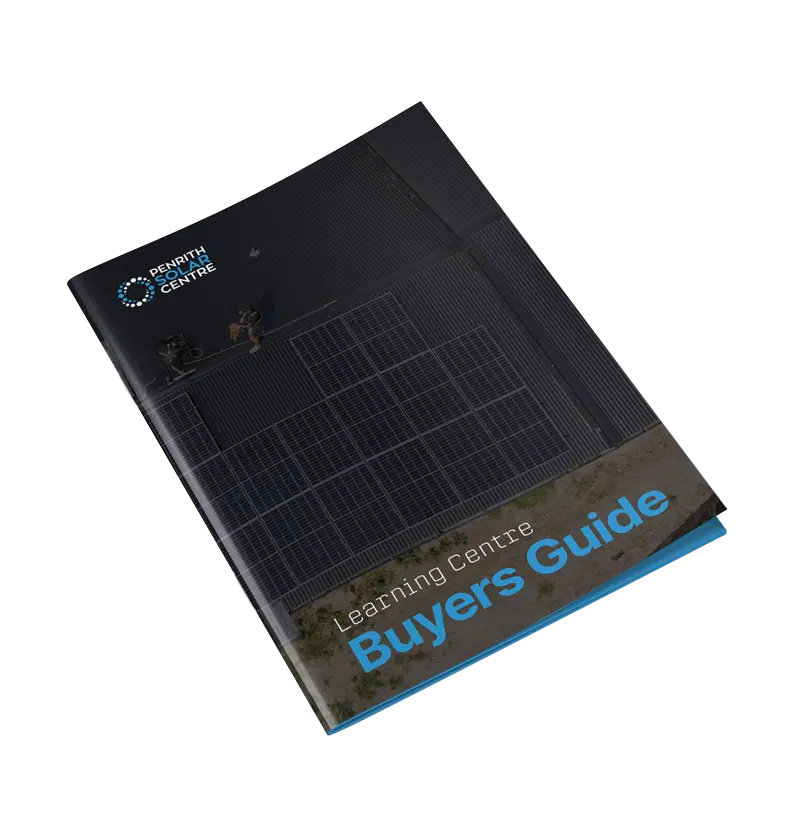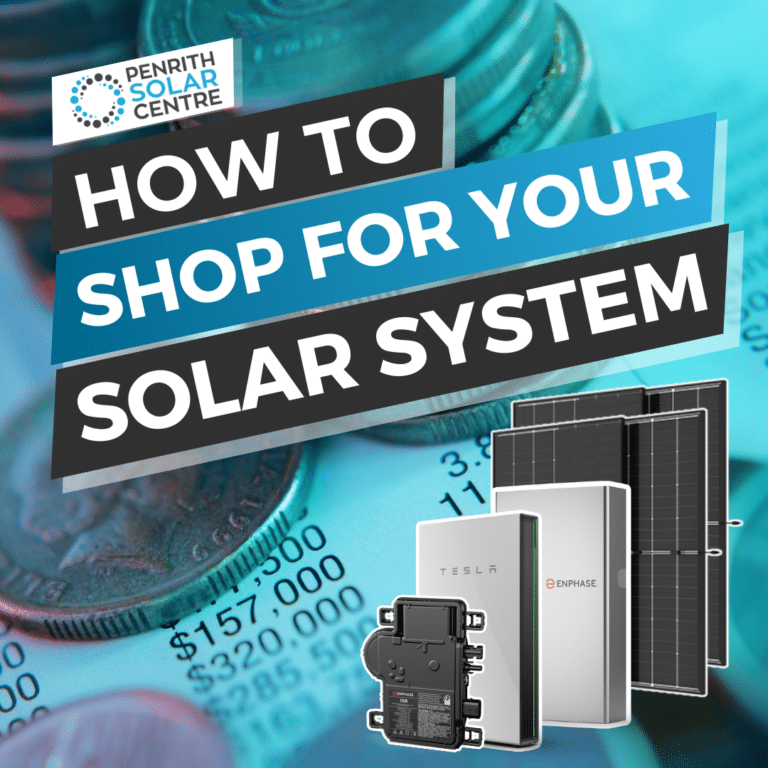
Are you curious about the NSW solar rebate but feel overwhelmed by the information out there? You’re not alone. However, there are several myths that can make it hard to understand the real benefits of the rebate scheme.
At Penrith Solar Centre, we’re experts in reducing carbon footprints and saving customers some money with solar panels. We’re doing what we can to combat myths and misinformation about things like the solar rebate. A well-informed customer becomes a happy customer, regardless of who you choose as an installer.
In this article, we’ll debunk the top four myths about the NSW solar rebate:
- Myth 1: The Solar Rebate is No Longer Available
- Myth 2: The Rebate Process is Too Complicated
- Myth 3: Only New Homeowners are Eligible for the Solar Rebate
- Myth 4: The Rebate Doesn’t Save Much Money
By the end of this article, you’ll have a clear understanding of how this rebate works and how it will benefit your solar purchase.
Myth 1: The Solar Rebate is No Longer Available
Australian Government Small-scale Renewable Energy Scheme (SRES):
The SRES is a government incentive to encourage the use of renewable energy in Australia. It offers money off the upfront price for the installation of solar panels. In the SRES, the scheme issues virtual certificates called Small-scale Technology Certificates (STCs).
This is where the government gets tricky: STCs are sold by your solar installer on your behalf to companies and corporations who are big polluters. That payout from those companies is the “rebate.” This transaction is regulated by the government, but the money comes from the companies purchasing these “green credits” in the form of STCs.
The number of STCs a system receives depends on its location, installation date, and the amount of energy it is estimated to generate in megawatt hours for the lifespan of the system.
Future Projections:
SRES Phase-Out by 2030:
- Even though the SRES “rebate” is still available, it is gradually phasing out by 2030. You still have seven years to cash in on this rebate.
- Every year, the number of STCs created per system sold decreases by 1/15th.
Advantage of Installing Solar Now:
- The sooner the installation, the more STCs, and, therefore, a higher upfront discount. Waiting reduces your rebate as the value of STCs continues to decline. It is still available.
If you’re interested in learning a bit more about STCs, you might want to check out the following article titled, How Does the Solar Rebate Work?
Myth 2: The Rebate Process is Too Complicated
Step-by-Step Guide:
Part One (To Be Done by You):
Get Quotes and Purchase a System:
- Find certified solar installers you’d like to work with and compare quotes. Check out some customer reviews.
- Make sure anyone you get quotes from is Solar Accreditation Australia (SAA) accredited (formerly the Clean Energy Council (CEC)).
- Your quotes should have a detailed breakdown of costs and expected savings. Make sure the quote includes the rebate taken off the price upfront.
- Pick one of the quotes from a certified installer who will then help you select the best system for your unique needs and goals.
Part Two (To Be Done by Penrith Solar Centre):
Penrith Solar Centre Takes Care of the Rebate:
- We apply the rebate as an upfront discount on the cost of the system.
- We handle all the necessary paperwork and submissions to the government.
- After installation, we get reimbursed by the corporations purchasing the STCs. You’re done, we’ve got it.
Piece of cake, right? We make sure that this process is straightforward, helping you maximise your savings.
If you’re interested in learning a bit more about the importance of a good installer for your solar (the most important component of any system, seriously), you might want to check out the following article titled, In-house Installers vs. Subcontractors: Which is Better?
Myth 3: Only New Homeowners are Eligible for the Solar Rebate
Eligibility Criteria:
Homeowner Status for New and Existing Homes:
- Both new and existing homeowners are eligible for the NSW solar rebate.
- You do not need to be a first-time homeowner to qualify.
- You need to own (or lease) a roof to be eligible for the solar rebate. No roof = no solar = no rebate. It’s simple.
Solar System Requirements:
Approved Solar Equipment:
- The solar system must use products approved by the SAA.
Installation by Accredited Installers:
- As we mentioned earlier, the system must be installed by a SAA-accredited installer (which we are!).
Location and Property Type:
Properties:
- The rebate is available for residential properties and businesses across NSW.
- Includes houses, townhouses, office buildings, or apartments. Really, any address with suitable roof space.
System Size and Capacity:
Minimum and Maximum Size:
- The solar system must be between 1.5kW and 100kW to qualify for the rebate.
Battery Integration:
- The recently announced rebate for solar batteries will be available in November.
If you’d like to learn a bit more about the solar battery rebate coming up in November, you might want to check out the following article titled, Everything You Need to Know About the Home Battery Rebate for NSW.
Myth 4: The Rebate Doesn’t Save Much Money
A family’s energy needs are increasing every day. We’re not just talking about the move to electric vehicles – though that’s coming too – we’re talking about all the extra screens, lights, and appliances it takes to run a household in 2024.
At Penrith Solar Centre, we find that our average size system is 11.7kW. Here’s a breakdown of how much you’ll save with the rebate for a system of that size.
Example Savings for an 11.7kW System:
Rebate Equation:
Solar system size (11.7kW) x Postcode Zone Rating (1.382) x Deeming Period (which is however many years remain before 2030, so in this case, the deeming period is 7 years) = Number of STCs (rounded down).
Rebate Savings:
- An 11.7kW system generates approximately 112 STCs.
- The value of each STC is market-driven. At PSC, we estimate the value at around $38.50 today.
- STCs for an 11.7kW system provide a rebate of approximately $4,312.
- This rebate is deducted from the initial cost.
Annual Reduction of the Rebate:
- Each STC represents 1 megawatt-hour (MWh) of renewable electricity generated or displaced by the system.
- Each year, the deeming period decreases by one year. In 2024, the deeming period is 7 years (2024 to 2030). In 2025, it will be 6 years (2025 to 2030).
Example: 11.7kW System Reduction Until 2030:
- An 11.7kW solar system installed in NSW in 2024 will generate approximately 112 STCs.
- For calculation purposes, we will use the above STC value of $38.50 and our postcode zone rating of 1.382. Keep in mind that the STC market does fluctuate, so these numbers are not fixed. Just a heads up about that.
Year-by-Year Reduction:
- 2024:
- Deeming Period: 7 years
- Approximate STCs: 11.7 * 1.382 * 7 = 112.9398 ≈ 112
- Rebate Value: 112 STCs * $38.50 = $4,312
- 2025:
- Deeming Period: 6 years
- Approximate STCs: 11.7 * 1.382 * 6 = 96.8052 ≈ 96
- Rebate Value: 96 STCs * $38.50 = $3,696.00
- 2026:
- Deeming Period: 5 years
- Approximate STCs: 11.7 * 1.382 * 5 = 80.671 ≈ 80
- Rebate Value: 80 STCs * $38.50 = $3,080.00
- 2027:
- Deeming Period: 4 years
- Approximate STCs: 11.7 * 1.382 * 4 = 64.5368 ≈ 64
- Rebate Value: 64 STCs * $38.50 = $2,464.00
- 2028:
- Deeming Period: 3 years
- Approximate STCs: 11.7 * 1.382 * 3 = 48.4026 ≈ 48
- Rebate Value: 48 STCs * $38.50 = $1,848.00
- 2029:
- Deeming Period: 2 years
- Approximate STCs: 11.7 * 1.382 * 2 = 32.2684 ≈ 32
- Rebate Value: 32 STCs * $38.50 = $1,232.00
- 2030:
- Deeming Period: 1 year
- Approximate STCs: 11.7 * 1.382 * 1 = 16.1342 ≈ 16
- Rebate Value: 16 STCs * $38.50 = $616.00
As you can see, the earlier you install a solar system, the more substantial the rebate you’ll receive.Top of Form
And energy rates jumped twice last year. How many times will they jump between now and 2030?
Impact of Waiting:
- Installing solar now secures a higher rebate.
- Energy prices are expected to continue rising.
- If you don’t install a solar system before 2030, you’ll miss out on the rebate. The longer you wait, the smaller your rebate will be.
- You’ll still save a significant amount on your energy bills, but without the rebate, the upfront cost of a system increases, which affects your payback period.
If you’re interested in how to calculate your solar system payback period, you might want to check out the following article titled, What is the Payback Period for Solar Panels in Australia?
Start saving with solar today.
Should You Invest in Solar? Light as Well.
Now you know a little more about what the solar rebate in New South Wales is and how you can use it to save energy (and the planet). Common myths and misconceptions can muddy the waters, especially when there’s so much math to calculate.
At Penrith Solar Centre, we do that calculating for you. The price you pay us includes the rebate. We handle it for you.

If you’re interested in learning a bit more about shopping for a solar system, you might want to check out the following article titled, 6 Mistakes to Avoid When Buying Solar.
Sources
Australian Government Clean Energy Regulator:
Website: Clean Energy Regulator
Information on the Small-scale Renewable Energy Scheme (SRES) and STCs.
NSW Government Energy Saver:
Website: Energy Saver
Information on energy savings and solar rebate programs in New South Wales.
Clean Energy Council:
Website: Clean Energy Council
Provides information on accredited solar installers and approved products.










